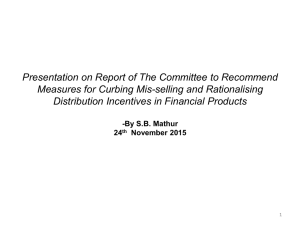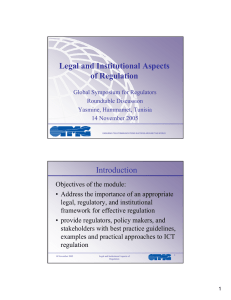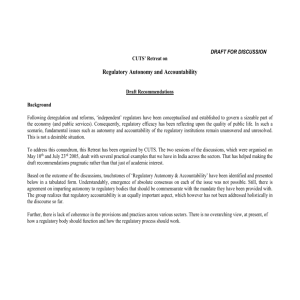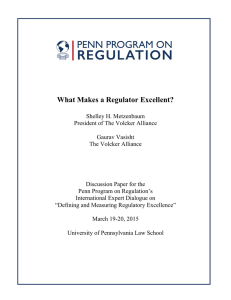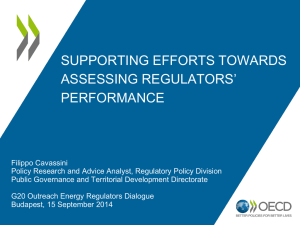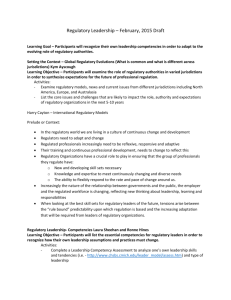take for NSE
advertisement
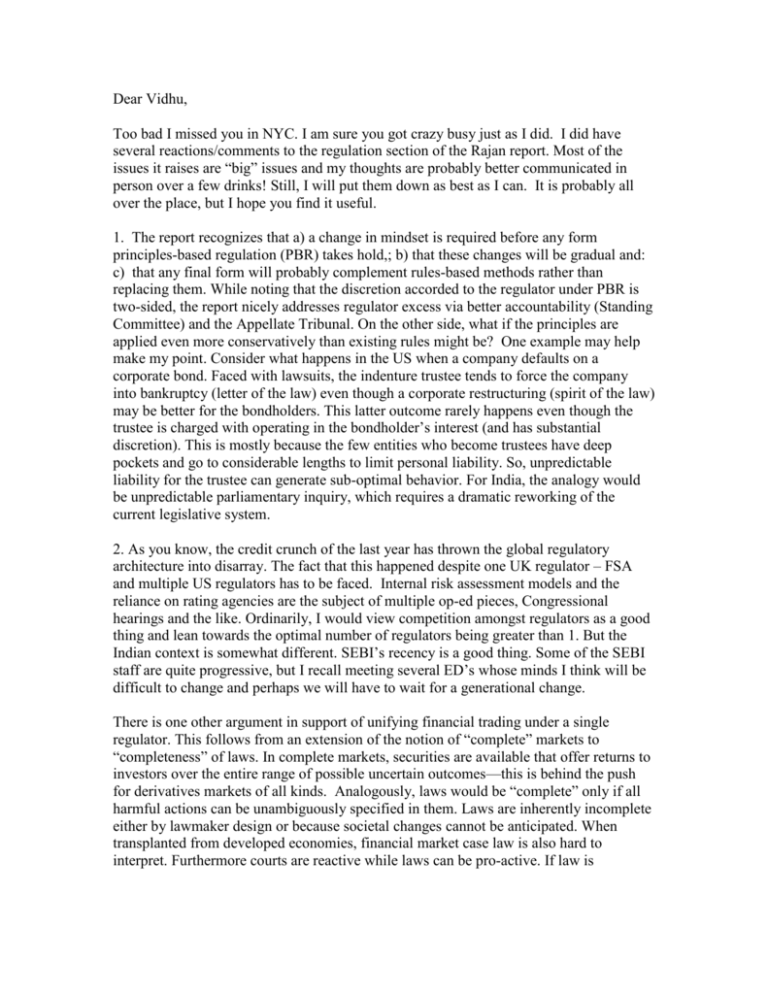
Dear Vidhu, Too bad I missed you in NYC. I am sure you got crazy busy just as I did. I did have several reactions/comments to the regulation section of the Rajan report. Most of the issues it raises are “big” issues and my thoughts are probably better communicated in person over a few drinks! Still, I will put them down as best as I can. It is probably all over the place, but I hope you find it useful. 1. The report recognizes that a) a change in mindset is required before any form principles-based regulation (PBR) takes hold,; b) that these changes will be gradual and: c) that any final form will probably complement rules-based methods rather than replacing them. While noting that the discretion accorded to the regulator under PBR is two-sided, the report nicely addresses regulator excess via better accountability (Standing Committee) and the Appellate Tribunal. On the other side, what if the principles are applied even more conservatively than existing rules might be? One example may help make my point. Consider what happens in the US when a company defaults on a corporate bond. Faced with lawsuits, the indenture trustee tends to force the company into bankruptcy (letter of the law) even though a corporate restructuring (spirit of the law) may be better for the bondholders. This latter outcome rarely happens even though the trustee is charged with operating in the bondholder’s interest (and has substantial discretion). This is mostly because the few entities who become trustees have deep pockets and go to considerable lengths to limit personal liability. So, unpredictable liability for the trustee can generate sub-optimal behavior. For India, the analogy would be unpredictable parliamentary inquiry, which requires a dramatic reworking of the current legislative system. 2. As you know, the credit crunch of the last year has thrown the global regulatory architecture into disarray. The fact that this happened despite one UK regulator – FSA and multiple US regulators has to be faced. Internal risk assessment models and the reliance on rating agencies are the subject of multiple op-ed pieces, Congressional hearings and the like. Ordinarily, I would view competition amongst regulators as a good thing and lean towards the optimal number of regulators being greater than 1. But the Indian context is somewhat different. SEBI’s recency is a good thing. Some of the SEBI staff are quite progressive, but I recall meeting several ED’s whose minds I think will be difficult to change and perhaps we will have to wait for a generational change. There is one other argument in support of unifying financial trading under a single regulator. This follows from an extension of the notion of “complete” markets to “completeness” of laws. In complete markets, securities are available that offer returns to investors over the entire range of possible uncertain outcomes—this is behind the push for derivatives markets of all kinds. Analogously, laws would be “complete” only if all harmful actions can be unambiguously specified in them. Laws are inherently incomplete either by lawmaker design or because societal changes cannot be anticipated. When transplanted from developed economies, financial market case law is also hard to interpret. Furthermore courts are reactive while laws can be pro-active. If law is incomplete and courts are reactive, then you create a pro-active institutional mechanismthe regulator –say SEBI as enforcer. 3. As I read the regulation section of the report, I recalled a meeting I had with Mr. Damodaran last summer. Among other things, I asked about a then-recent SEBI proposal to let financial advisors essentially regulate themselves. In response, he pointed to the big TV screen in front of him and said, there are thousands of these people- how am I going to regulate their behavior? This is again principles-based regulation at work and I am not sure if the current Chairman echoes that sentiment. My point is how does one judge if this form of market discipline is adequate in India and how does one police the many conflicts of interest that will continue to arise? All such efforts have to be matched with an intensity of enforcement which is going to take a lot of doing. 5. Related to the difficulty of changing mindsets is the recent action of the Forward Market Commission in India which banned selected futures trading. This despite the proposals in the Rajan report that call for tracking down the violators and punishing them rather than shutting down markets and hampering price discovery. Pretty much the same thing happened when I was in India during my sabbatical in 2006-07 except that it was not chickpeas at that time. I don’t know how appointments to this Commission are made, but it seems loaded with people who don’t like derivatives markets! I also remember having a long discussion with an RBI director – who was convinced that players in futures markets were responsible for any and all price dislocations. Echoes of these FMC moves are visible here in the US as well with Congress holding recent hearings on commodity prices. What complicates the problem is that it is not clear that there are any violators at all. I think that the rise of commodity prices globally is in large part a function of mindless indexing that has been taking place ever since commodities became an “asset class.” Big money has decided to be exposed to commodities via exchange traded funds or other similar vehicles and so up goes the price of rice in Bangladesh. Not quite the butterfly effect of chaos theory since the cause and effect are much more direct-at least to me. Such hoarding cannot go on for ever, and markets will eventually correct, as both consumers and producers adjust their demand and supply to market prices. This would be an interesting study in the Indian context in its own right. If I am correct, then regulatory intervention is really not called for. (On a related note, did you notice the NYSE-Euronext was considering an exchange-traded credit derivatives market?) But I am digressing. 5. As you must know, there is a bigger socio-cultural context underlying this embrace of the “market” solution. In the West, institutional infrastructure-legal, accounting, regulatory, is pretty much in place- something that India is only evolving towards. Faith in these institutions generates commonly accepted business conventions that underlie business transactions—limited conflict of interest, prudence and transparency—again things that India can be viewed as evolving towards. In consequence, informal arrangements between contracting parties alter the conventional lens within which Indian principal-agent dynamics and governance structures can be viewed. Again, in the West, most parties (investors, corporations, managers, speculators, regulators, govt) are predisposed towards thinking that the market solution is the best one—at least until mankind comes up with better. But not back home. I suspect that changing this mindset will take a long time. 6. Finally, I noticed that KP Krishnan was part of many of the Committee’s deliberations, but I did not see any names from the MoF or for that matter from the RBI. KP is one of the converted and perhaps the omission of others does not mean anything in rapidly changing India, but it did catch my attention. I sincerely hope the report eventually becomes more than just part of a seminar circuit. I have already gone on for too long. Hope you find this useful. Cheers Badri


